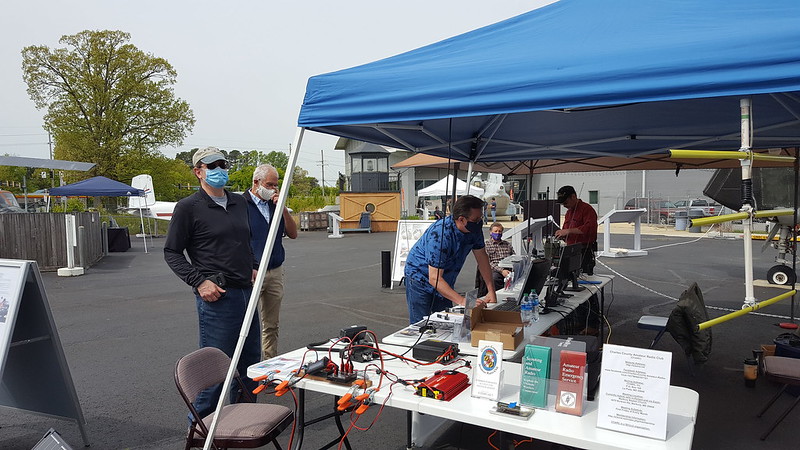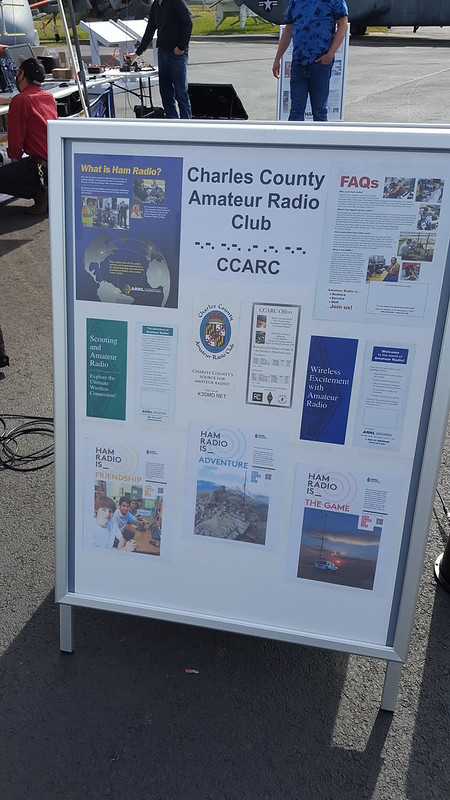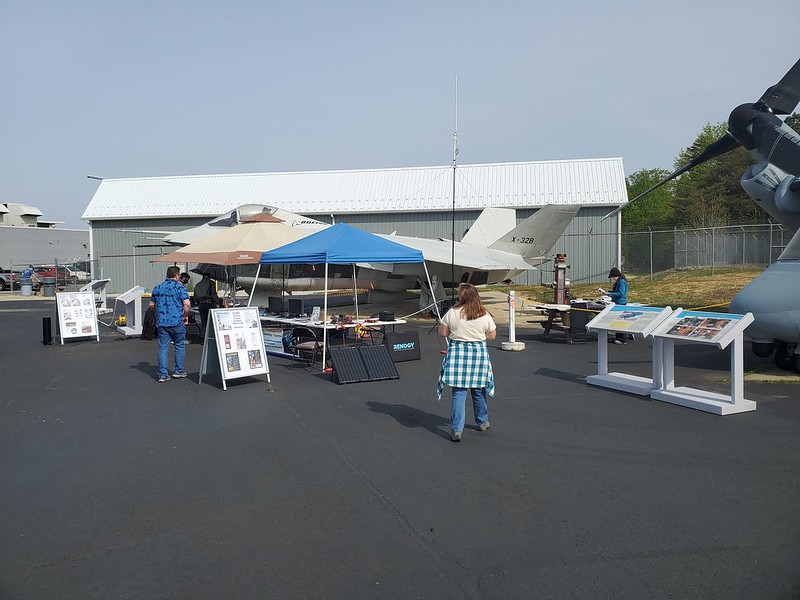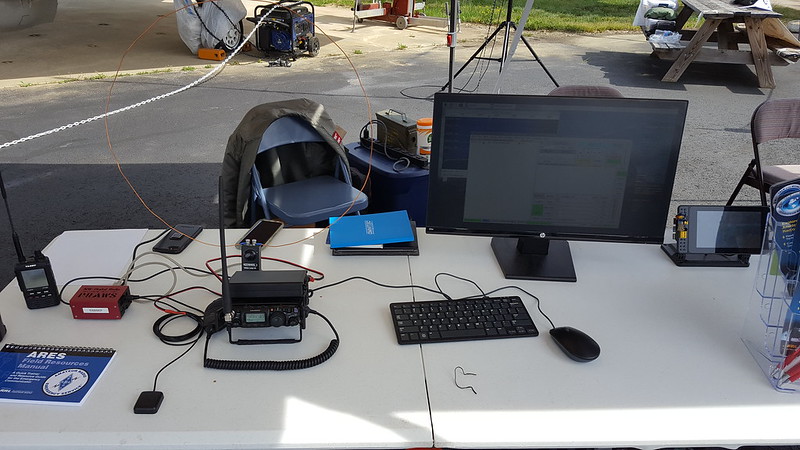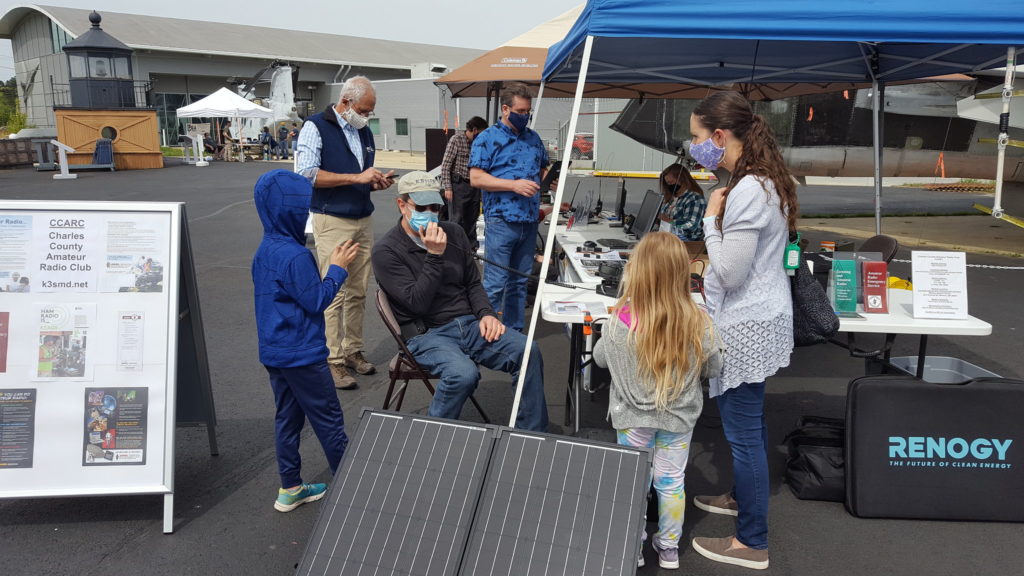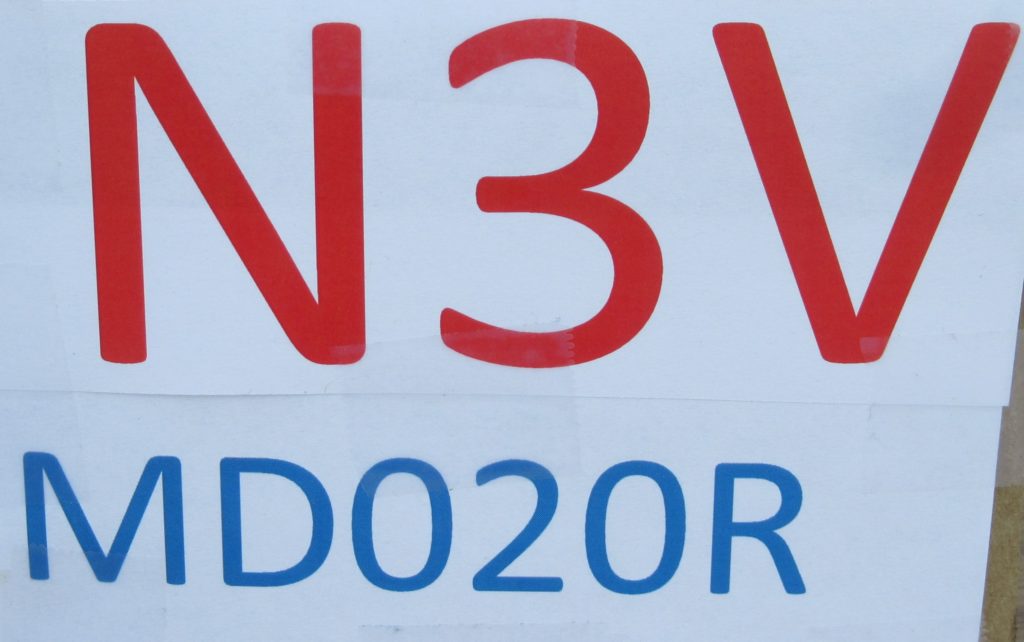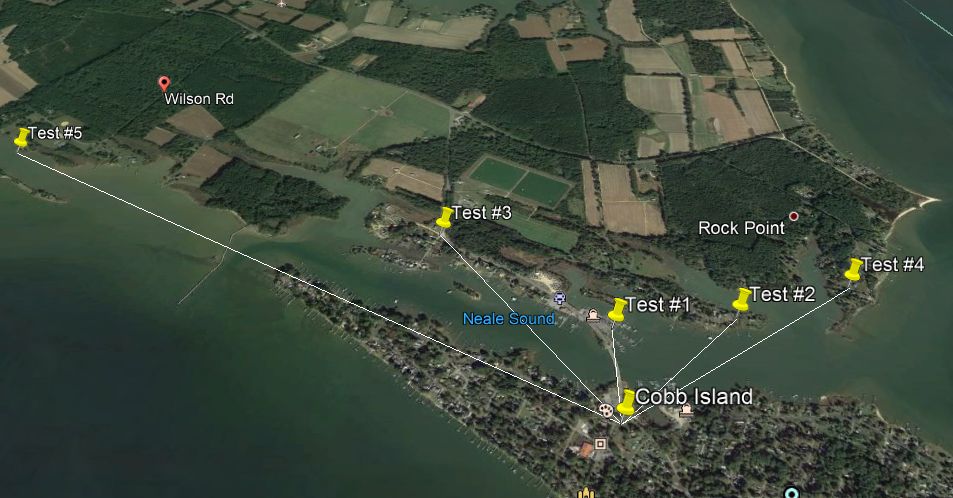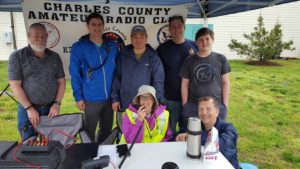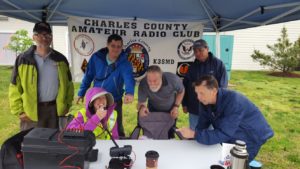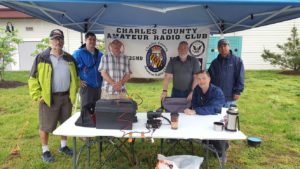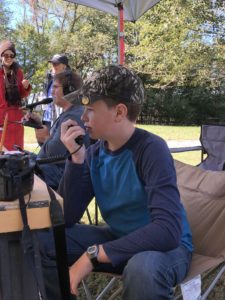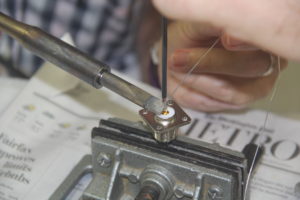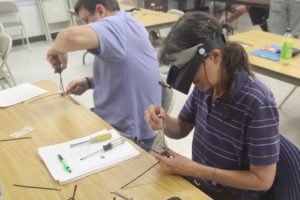On Saturday, April 24, 2021, members of the Charles County Amateur Radio Club (CCARC) and the St. Mary’s County Amateur Radio Association (SMCARA) combined their time, talent and radios during the 4th Annual STEAM Day at the Patuxent River Naval Air Museum in Lexington Park, MD. More than a dozen vendors and exhibitors shared their displays and activities both inside the museum and outside on the flight line with the families who attended the event, which featured various aspects of Science, Technology, Engineering, Arts and Math (STEAM).
CCARC member Jeff – KB3SPH, set up a Kenwood D710G dual band radio, which was powered by a deep cycle battery, which he kept charged with his 100 Watt Renogy solar panel. CCARC member Pat – KB3UYZ, was stationed at his QTH, and available to speak to guests via Jeff’s rig, through the N3PX repeater. The antenna was a Diamond X-50 mounted on a Buddipole tripod and mast system.
Bob – KB3KOW, also with CCARC, did multiple digital radio demonstrations with his rigs. He used a UC-1374-531 VHF APT Weather Satellite Antenna (WXSAT), which collected real time weather satellite data in the Southern Maryland area, and then displayed it on a computer monitor. Bob also demonstrated how to send messages via WinLink Packet.
Bob and Pam – KB3SWS, from CCARC, also conducted a mini Fox Hunt at the site. Instead of hunting for a “fox,” Pam created a different version, during which guests learned how to “Track a Shark-Cat.” The young trackers used a small receiver and a loop antenna, provided by Bob. Pam created displays that explained Radio Direction Finding (RDF), as well as the Shark-Cat and two decoys, a Spider-Cat and a Dragon-Cat.
In addition to the RDF displays, Pam provided a display about radio’s “First Voice,” Reginald Fessenden, as well as signs and information about CCARC and ARRL.
Working on behalf of SMCARA, Chris – KB2SKP and Rachel – KF7AWC demonstrated the compact digital “Go Kit” that Chris built. Chris set up a “Slinky” antenna, which could be adjusted for different frequencies, depending on how much, or how little, the loops of the Slinky were stretched apart. Rachel explained the various electrical and electronic parts of the Go Kit to the guests. She also told them that amateur radio operators are able to send “Health and Welfare” messages during emergencies, when other modes of communication, such as cell phones, are not available. Bob demonstrated the concept by sending a text via radio to a guest’s cell phone.
Jon – N3AK, who is also a member of SMCARA, did another digital demonstration, during which he showed guests what music “looks like.” When music was played via radio, it was then translated into various visual graphs on a monitor, via a Cubic SDR program.
CCARC member Bill – W8BL, visited the radio clubs’ displays, in addition to manning the University System of Maryland at Southern Maryland booth. Joe – KB3HNP, from CCARC, also attended the event. Both of them gleaned new ideas from the displays, including options for solar power and transporting HT radios.
Other hams on site during the day included Steve – KA3WAP of SMCARA, Pete – WA3UMY, the SMCARA Vice President, and Joe – N3KWA. Rob – N2OMC, a CCARC member and the SMCARA President, worked behind the scenes as the liaison between CCARC, SMCARA and the STEAM Day points of contact.
Article written and submitted by Pam – KB3SWS
For photos of the event, go to:

